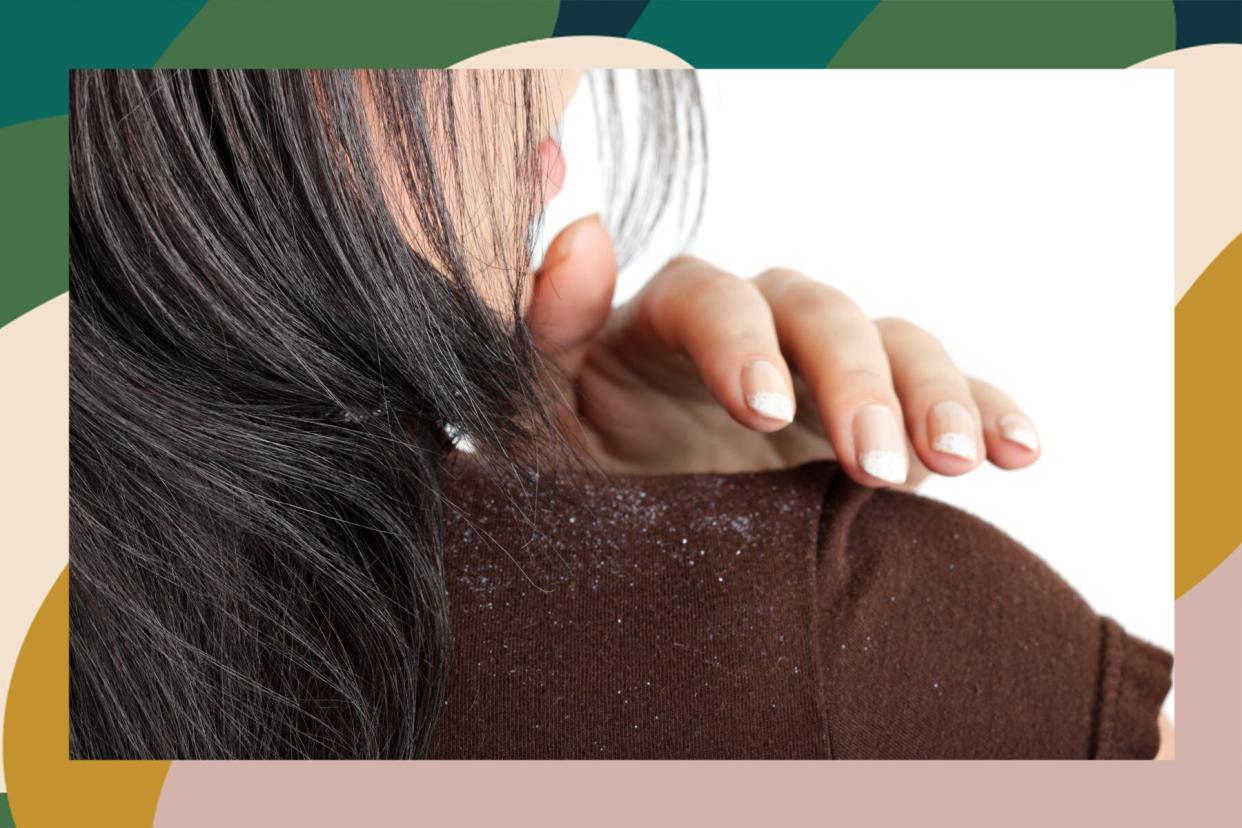Treat Dandruff Head-On with These Expert-Backed Tips

Getty Images
Like a fly that can't seem to get away, dandruff can be quite a nuisance. In fact, approximately half of the world's population experiences dandruff, says Rolanda Wilkerson, principal scientist and Senior Manager of Scientific Communications in Beauty Care at Procter & Gamble. Although dandruff can be difficult to deal with, there are several ways to manage the itching, inflammation, and flakes that come along with this condition. To find out more, we turned to three experts to learn how to treat dandruff head-on.
What is dandruff?
Dandruff is a skin condition that triggers the skin to flake, itch, and appear red, and Wilkerson says that it's the body's response to the growth of a fungus known as Malassezia globosa. Although it commonly occurs on the scalp, dandruff can also develop on the eyebrows, chest, nose, and groin, adds Jonathan Zampella, assistant professor of dermatology at NYU Langone Health.
What causes dandruff?
Dandruff tends to be attributed to fungal growth. However, that isn't always the case. Both Wilkerson and Zampella cite genetics as one of the possible causes behind dandruff. In fact, Wilkerson says about half of the world's population have "dandruff genes." High oil and sebum production levels may also be to blame.
What are the differences between dandruff, seborrheic dermatitis, psoriasis, and a dry scalp?
While dandruff is characterized by a dry, inflamed scalp, it shares some similarities with other skin conditions, such as seborrheic dermatitis, psoriasis, and a dry scalp. Wilkerson and Zampella say seborrheic dermatitis and dandruff are variations of the same condition, but the former is more serious.
"Seborrheic dermatitis is related to the seborrheic areas of the body where there is oil gland activity. Dandruff is restricted to the scalp, but shows the same symptoms as seborrheic dermatitis—flakes, dryness, and itch."
—Wilkerson
On the other hand, psoriasis is an entirely different condition. Similar to seborrheic dermatitis and dandruff, psoriasis can also cause the skin to produce white flakes.
"While dandruff and seborrheic dermatitis's primary root cause is a fungus/microbe on the skin, psoriasis is believed to be caused by an immune response that creates an inflammatory reaction on the skin that shows up as plaques of red skin or scales/flakes."
—Wilkerson
Meanwhile, a dry scalp has several potential causes and is not deemed an official medical diagnosis. A dry scalp is a side effect of conditions like dandruff and seborrheic dermatitis but may also be a result of changes in air quality, says Caroline Robinson, a Chicago-based dermatologist and founder of Tone Dermatology. "In the winter, the air is often drier as moisture is leached from the air by our heating systems. This leads to drier hair and scalp," she adds.
How do you treat dandruff?
When it comes to treating dandruff, several over-the-counter products and prescriptions can help mitigate its effects. Robinson, Wilkerson, and Zampella recommend trying shampoos and conditioners that contain zinc pyrithione and selenium sulfide. "These ingredients also help to restore the health of the scalp by reducing flaking, improving the skin's ability to resist dryness, and providing a more balanced skin cell turnover, leading to fewer flakes," Wilkerson explains.
However, zinc pyrithione and selenium sulfide-based shampoos and conditioners may not work for everyone. Zampella says those with scaly scalps would fare better with salicylic acid-based shampoos and conditioners, whereas those experiencing redness should look to trying shampoos and conditioners that include coal tar.
If you're experiencing a serious case of dandruff, which typically involves excessive itchiness and redness, Zampella and Robinson advise seeing a dermatologist. Dermatologists can provide prescriptions for antifungal shampoo and steroid lotion, explains Zampella.
Best shampoo and conditioner for dandruff:
hellogiggles Available at Amazon
Pyrithione zinc, which has antibacterial, antimicrobial, and antifungal properties, is the anti-dandruff hero ingredient in this duo, but what makes them stand out from other products are the jojoba and Argan oils that soothe and moisturize the hair and scalp from drying out. We love this duo so much, we gave it a 2021 Beauty Crush Award.
Best shampoo and conditioner for scaly scalps:
hellogiggles - $24 Available at Thrive Market
Tackle flakes and scales with the help of this zinc-infused 2-in-1 shampoo and conditioner. Apart from treating our dandruff, the papaya extracts condition the scalp and hair while the sage gives off a calming, spa-like scent.
Best shampoo and conditioner for red, irritated scalps:
hellogiggles Available at Amazon
With one percent coal tar, this Amazon-loved pick is a great introductory shampoo for someone looking to calm scalp redness and irritation. (You can find shampoos with up to 10 percent, but as with all active ingredients, we recommend starting at smaller doses and slowly building up resistance to prevent irritation.) It has over seven thousand five-star reviews on Amazon, so you know it'll work.

